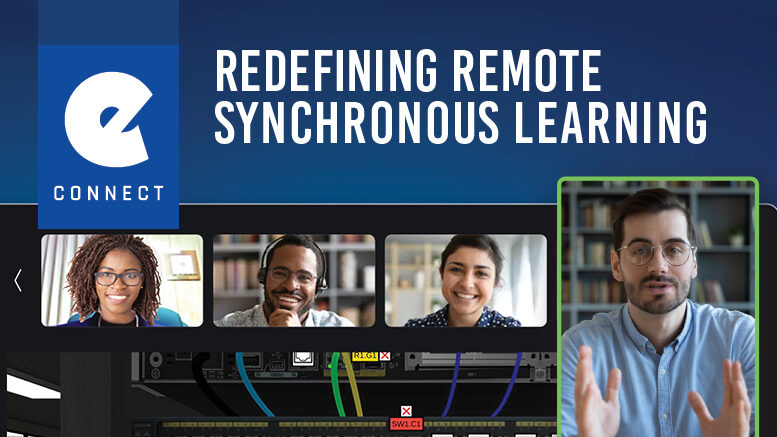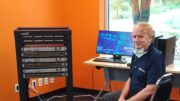How ECPI University is Delivering the Best Possible Student Experience
By Dr. David Shoop, ECPI University Vice President of Academic Affairs

As fall quickly approaches, residential colleges and Universities wrestle with their plans to resume classes. Faculty, students, and administrators have diverse views on whether instruction should be in person, remain online, or delivered in a remote synchronous video classroom. Academic institutions are not alone in this struggle. Professional sports leagues have developed unique plans to resume games in response to the continued impact of the COVID-19 pandemic. And Google recently announced that employees will continue to work remotely until July of next year. This evolving environment begs the question, has education changed forever? What will the education landscape look like in the next year and beyond?
“This unprecedented change we have experienced has undoubtedly pushed us to develop the way we deliver our curriculum and critically rethink the educational environment. The challenges it has presented have caused us to grow and adapt. The remote synchronous modality, known traditionally as distance learning, has been around for decades, but these last few months have resulted in a fresh look at how we can leverage current technologies to generate an effective remote classroom experience.”
ECPI University’s approach is to balance remote learning with hands-on education, a defining characteristic of our academic philosophy. This approach recognizes the need to construct safe environments for student learning and gives consideration to some of the personal challenges many students face in the wake of the pandemic. It also recognizes that what draws students to our campuses in the first place, the desire to receive a hands-on education.
Just as ECPI University was well positioned to transition quickly to a remote synchronous environment as the corona virus spread, it is likewise situated to balance instruction delivered remotely with that of hands-on learning on campus in order to assess students’ progress on developing skills employers are seeking. Determining the optimum balance between these will be the model moving forward into the next year.
The move back to the classroom has been deliberate, measured, and focused on creating safe and meaningful experiences for students. Examples of this include weekly gatherings of Engineering Technology students in remote synchronous classes, augmented with lab work at their respective campuses. One specific example involves students in Digital Systems I and their design of a traffic light system. After completing the design analysis and verification remotely, students came to campus and implemented their design in the lab. The ability of students to validate the functionality of their design brought clarity to the concepts they had studied and provided them an opportunity to build confidence in their skill in a real environment.
Similarly, students in a networking fundamentals class participate in their remote synchronous classroom Monday through Wednesday, but on Thursday they work with a partner to complete a lab assignment. In this case, one student is responsible for wiring the physical equipment in a lab on campus while the other student completes the programming remotely. The lab partners use Zoom to connect throughout this activity.
This unprecedented change we have experienced has undoubtedly pushed us to develop the way we deliver our curriculum and critically rethink the educational environment. The challenges it has presented have caused us to grow and adapt. The remote synchronous modality, known traditionally as distance learning, has been around for decades, but these last few months have resulted in a fresh look at how we can leverage current technologies to generate an effective remote classroom experience. It has also reinforced the importance of the benefits gained by having students in the lab, working with their hands, using real equipment. We will continue to hone our skills as we teach and learn in a remote environment and look for new and emerging technologies to enhance this.
At ECPI University, we have long preached the benefits of lifelong learning to our students, and that applies to us as well. As educators, we continually strive to create the best possible learning experience for our students, which includes maintaining personal attention and meaningful interaction between faculty and students. Therefore, we will continue to strive for the best possible integration of time-tested hands-on education – which drew students to our institution in the first place – with remote learning to deliver the optimum student experience. In the following pages, you will see many examples of faculty members going the extra mile to do just that.








Be the first to comment on "Redefining Remote Education"